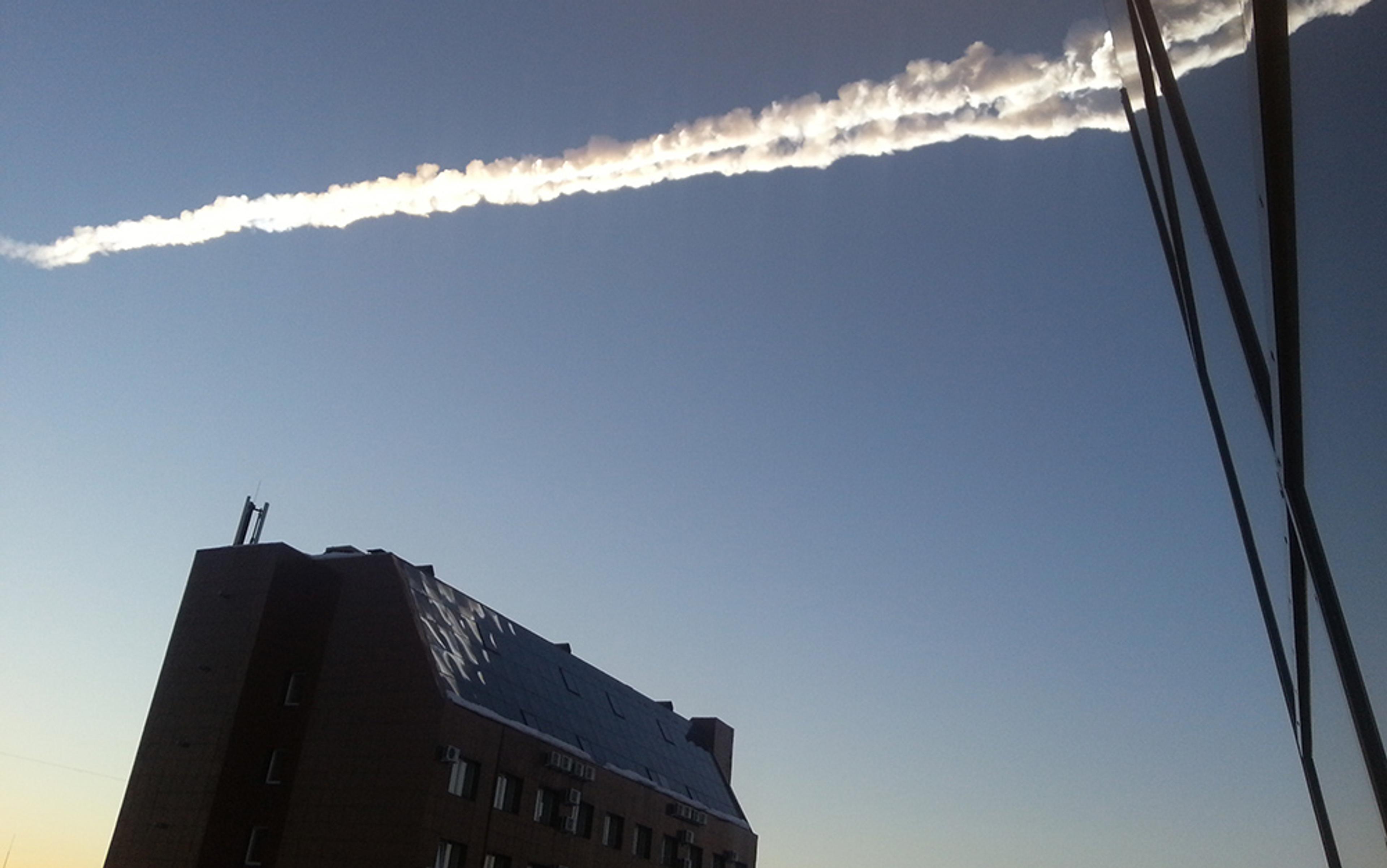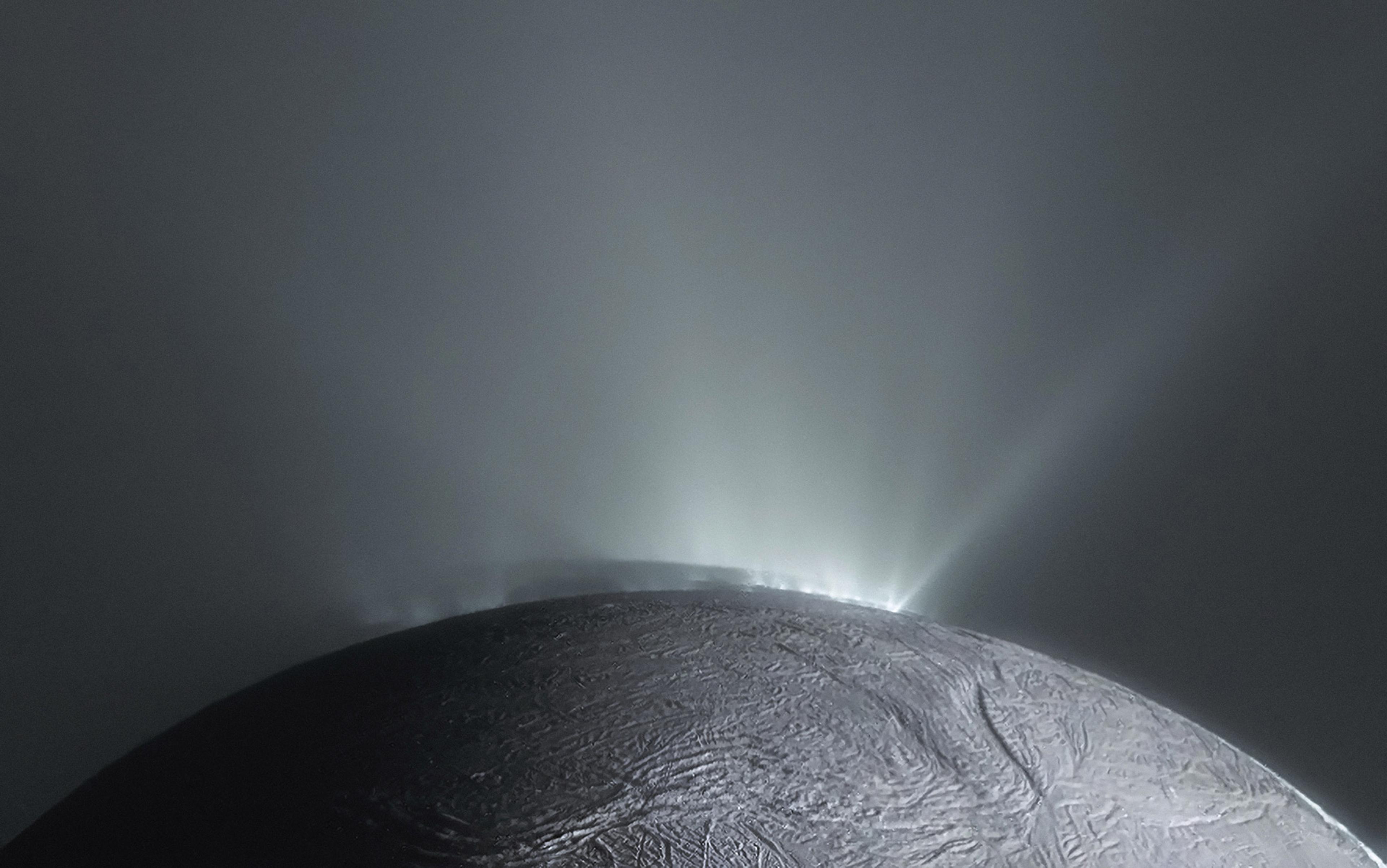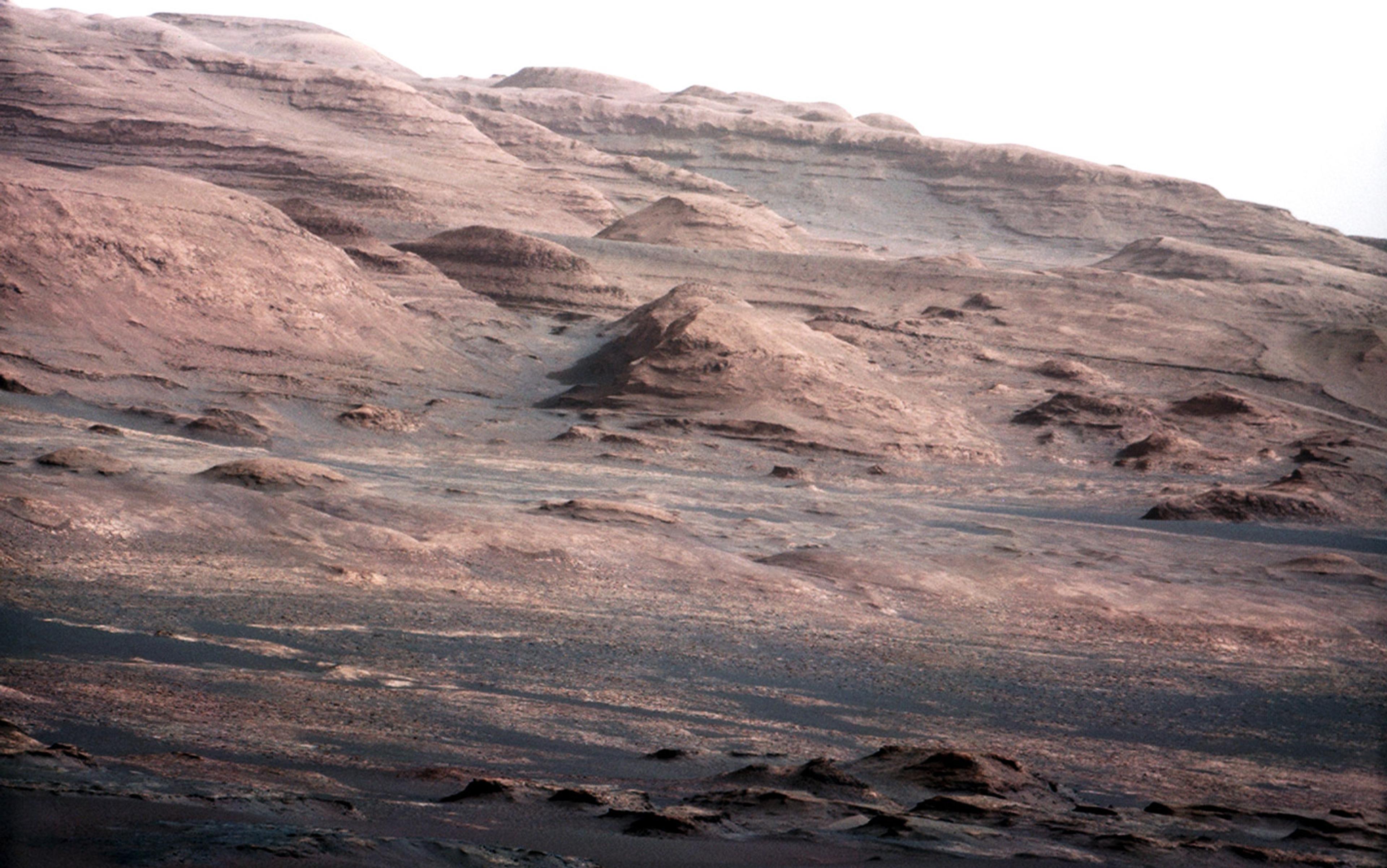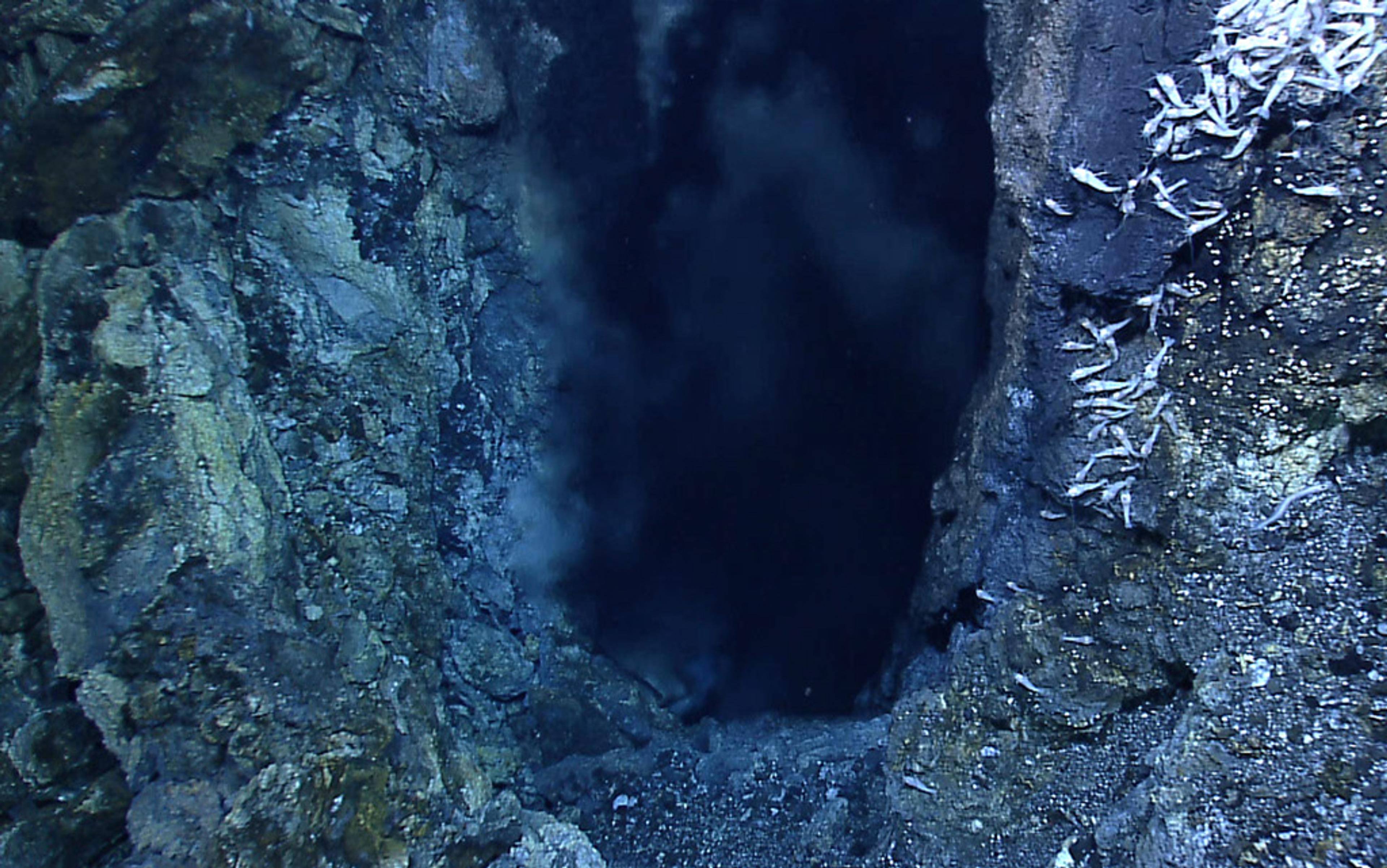Scientists discovered alien life in 1961. What, you don’t remember? There was even a drawing of them in the prestigious science journal Nature. True, you might not have known that from the decorous title of the paper in which it appeared – and the aliens were disappointingly microscopic in size. But early the following year, the French magazine Planète was more upfront about the claim, reproducing the Nature picture accompanied by a note declaring: ‘This is the first image of an extraterrestrial being.’
Those reports seemed like the culmination of a century of speculation about a meteorite that had fallen to Earth near the town of Orgueil, France, in 1864. For a moment, its fossilised cargo had appeared to prove that life existed beyond Earth. Yet those claims did not stand the test of time. They were instantly disputed; within a few years, they were generally dismissed, and today they are largely forgotten. But while the specifics of the controversy have faded, the broader narrative has remained remarkably durable.
Meteorites are literally otherworldly, providing a physical connection between heaven and Earth. If life existed anywhere up there, falling space rocks were – until quite recently – the only way that scientists could get their hands on it down here. It isn’t surprising then that meteorites have long been the focal point of feverish debates about the connection between our living world and the rest of the Universe. Those debates continue today.
But their context shifts over time. When the Orgueil meteorite arrived, it crashed into furious mid-19th-century arguments about the evolution of life and its origins. Five decades later, scientific interest in meteorites was coloured by ideas that space rocks might have helped to scatter life throughout the solar system. By the time of the Nature paper in 1961, notions about extraterrestrial life had become caught up in the tense atmosphere of the Cold War space race, which gave the question of what might be found in outer space fresh urgency.
In recent times, meteorites have informed our view of, and our priorities about, what spacecraft – and perhaps, one day, human explorers – might find on Mars and other planets. And we now recognise that a cosmic delivery of life with an independent origin from our own would revolutionise our ideas about the extent of life throughout the whole known Universe. The legacy of the Orgueil meteorite provides a cautionary tale about how we should regard these messengers from beyond. For what we read into the meteorites’ messages crisply reflects the metaphysical preoccupations of the age in which they fall.
The very reality of meteorites was a matter of dispute through much of history. Around 77 AD, the Roman author Pliny wrote in his encyclopedic compendium Natural History: ‘That Stones fall often, no Man will make any doubt.’ Since those stones appeared to come down from the eternal heavens, it’s hardly surprising that they were invested with spiritual significance. Like comets, they seemed to be signs from God, and in medieval Europe they were sometimes treated as holy objects – or as portents of doom.
But by the early Enlightenment, Pliny’s Natural History had come to seem like a collection of credulous tittle-tattle, and meteorites were derided by serious natural philosophers as the fantasies of ignorant people. ‘A sign of being rational and enlightened was that you found the idea of falling stones a joke,’ says Simon Schaffer, a historian of science at the University of Cambridge. Rather like ghosts and other paranormal phenomena today, meteorites served to define the border between science and pseudoscience.
Those attitudes began to change in Germany in the 1790s, due in no small part to the scientist Ernst Chladni, a pioneer of acoustics. Inspired by a conversation at Göttingen with the polymath Georg Christoph Lichtenberg, Chladni decided to examine records of stones from the sky, looking for common factors in the descriptions. Chemical analyses of a few of these objects had shown that they were made of familiar elements, particularly iron. Chladni became convinced that the objects were authentic. More extraordinarily, he suggested that meteorites were cosmic debris, bits of the solar system left over from the formation of the planets out of gas and dust. This mode of the genesis of the solar system had been proposed by the German philosopher Immanuel Kant in 1755, and then expanded in 1796 by the French savant Pierre-Simon Laplace.
It was all there, pretty much, in Chladni’s book On the Origin of the Natural Iron Mass (1794): an outline of the science that became meteoritics. Lumps of iron-rich rock from space, Chladni said, would be turned to fireballs as they fell through Earth’s atmosphere and were heated up by air friction. Their composition was similar to that of our planet because all the objects of the solar system had a common origin. In place of the classical Greek notion of the heavens as a separate realm, whose perfection contrasted with the corruptible domain of earthly existence, Chladni proposed a messy continuity.
did the presence of apparently organic matter in the meteorite mean that there was life in space?
To suggest that the heavens were so untidily strewn with rubble was still controversial at the time. But the discovery of the first asteroid, Ceres, in 1801 made it a much more plausible idea. So too did a huge increase in the number of sightings of meteorites and meteors in the closing years of the 18th century. Not that there was a sudden blizzard of space debris; rather, serious people had needed to acknowledge the existence of such things before they could start to ‘see’ them.
In April 1803, the perfect opportunity to put the new ideas to the test arose in France. A meteorite fall near the town of L’Aigle in Normandy scattered thousands of fragments over the countryside, witnessed by many observers. The young scientist Jean-Baptiste Biot was sent from Paris to investigate. His report sealed the idea that meteorites are genuine. In its entry on meteorites in 1824, the French Dictionary of Natural History expressed astonishment that, even recently, some savants were known to ‘ridicule those who were defending their existence’ – as if, but for these foolish sticks-in-the-mud, science had known all along that country-folk were telling the truth.
Stones and iron from space were startling enough, but a meteorite that fell in the commune of Alais in southern France in 1806 hinted at a more remarkable connection between heaven and Earth. Unlike most, this meteorite was soft and friable. Chemical analysis showed that it was 2.5 per cent carbon. The French chemist Louis-Jacques Thénard declared the meteorite to look and feel so much like peat that ‘several individuals had a hard time to believe it was not’. That was truly odd. Peat is the remains of decayed vegetation, so the Alais meteorite immediately raised a question: did the presence of apparently organic matter in it mean that there was life in space?
In some ways, the idea seemed less shocking to scientists back then than it would today. Almost as soon as it was understood, in the 17th century, that the Moon and other planets are worlds like ours, it was almost taken for granted that they’d have life on them. When the German chemist Friedrich Wöhler studied a sample of carbon-rich meteorites in the late 1850s, he confidently wrote that their organic (carbon-based) material ‘can only have formed from organised bodies’ – in other words, from living organisms.
Wöhler was fascinated by the boundary of the living and non-living. In 1828, he synthesised the compound urea, which is made by living organisms, from ammonium cyanate, which was considered to be an inorganic chemical. This process seemed to reveal a continuum between the biotic and abiotic worlds. Until the early 19th century, many chemists believed that living and non-living substances are distinguished by some mysterious principle that gives rise to the organisation of living things – a ‘vital force’. But Wöhler’s chemical synthesis of urea implied it was possible to cross this boundary.
‘Life is the germ,’ Pasteur declared in 1864, ‘and the germ is life’
A continuum between the organic and inorganic worlds was consistent with the old idea of spontaneous generation: the belief that living things could arise spontaneously from non-living matter, such as insect grubs forming in dead, rotten meat. By the mid-19th century, that particular example seemed far-fetched, but there was a new possibility for spontaneous generation that arose from close study of biological decay and the related process of fermentation. Scientists had come to understand that these processes were caused by microorganisms. There was an active debate at the time: do these invisibly-small organisms appear spontaneously, or are they seeded somehow?
In 1859 the French chemist Louis Pasteur seemed to settle that question, pointing toward a conclusion that contrasted with Wöhler’s continuity of living and non-living matter. Pasteur showed that meat broth boiled to sterilise it didn’t putrefy when kept in a flask open to the air but with a bent, swan-like neck so that airborne particles (carrying microorganisms) couldn’t get in. For Pasteur, this showed that living and non-living matter were totally different substances, and couldn’t be inter-converted. ‘Life is the germ,’ he declared in 1864, ‘and the germ is life.’
In that decade, the world of science, particularly in France, was bubbling with these conflicting ideas about how life begins and what it is. Then it seemed that the divine hand decided to stir the pot.
On Saturday 14 May 1864, the sky exploded above Orgueil, a picturesque little commune in the Midi-Pyrénées. According to newspaper reports, a glowing object with a bluish-green colour appeared in the sky and grew larger, turning first white, then yellow and red. When it was half the diameter of the Moon, there was a sound like cannon fire, and the object vanished, leaving a white cloud in the sky. Moments later, there was a smell of sulphur in the air, and a shower of small stones rained down over the region. Some of those stones were delivered into the safekeeping of the Natural History Museum in the regional prefecture of Montauban.
In a local newspaper report, a professor of physics named Peyridieu said that he had managed to get hold of a fragment of the meteorite, which was soft and blackish inside its crust. When he put it in water, it dissolved into mud as ‘black as shoeshine’. Over the next couple of years, a procession of French chemists studied pieces of the Orgueil meteorite, and several attested to its peaty character. Gabriel Auguste Daubrée, the doyen of French meteoritics, cautioned that ‘nothing proves so far the existence of organised beings, animal or vegetal’ in these fragments, but others were less guarded. The astronomer and science populariser Camille Flammarion (the Neil deGrasse Tyson of his day, you might say) decided that chemical analyses of the Orgueil meteorite ‘reveal the existence of organised beings on the globes from which they came’: in other words, aliens.
Who better to adjudicate this controversy than the famous Pasteur? He knew from his fermentation studies how easy it is for terrestrial microorganisms to contaminate a sample. He got hold of a piece of the meteorite and used a sterilised drill to extract material from the core and put it in a solution of nutrients to see if any microbes would grow. They didn’t. Pasteur considered the results such an anticlimax that he didn’t even bother to publish them.
Nevertheless, the Orgueil meteorite continued to fuel speculations. Even if it did not contain life itself, it seemed perhaps to harbour the ingredients of life. That idea resonated with the contemporary ideas of Charles Darwin. In 1871, thinking back to the origin of all species, he speculated privately about life appearing spontaneously on Earth in some ‘warm little pond’ nourished by ‘ammonia and phosphoric salts’ along with light, heat and electrical discharges. This was the original ‘primordial soup’ theory of the origin of life.
If it happened here, why not anywhere? In 1903, the Swedish chemist Svante Arrhenius proposed that life might not have started from scratch on Earth. Instead, its seeds – primitive life forms – might have arisen elsewhere and drifted here on lumps of space debris, such as dust and small meteorites. Arrhenius’s hypothesis became known as panspermia, meaning in effect ‘ubiquitous seeding’, and it imbued carbon-rich meteorites such as Orgueil with fertile – even ominous – new meaning.
The notion of meteorites as lifeboats for aliens chimed with the mood of the times. Darwinian evolution provided a scientific framework for thinking about alien life, and the idea of life travelling from planet to planet began to look not just plausible but scary. H G Wells’s The War of the Worlds (1898) suggested that, if there’s life on Mars, we might not want to get intimate with it.
Panspermia seemed even more threatening in the paranoid years after the Second World War. The takeover of the Earth by carnivorous plants in John Wyndham’s novel The Day of the Triffids (1951) is made possible by a shower of green meteors that turn most of the human population blind. It’s not hard to feel the bitter wind of the Cold War blowing through Wyndham’s book, or in thematically similar movies such as Invasion of the Body Snatchers (1956), in which alien pods fallen from space take on human form.
In the post-Sputnik era, meteorites once again entered the discussion about outer space. By this time, human explorers were gearing up to follow extraterrestrial rocks to their source. In May 1961, President John F Kennedy announced that the United States would send men to the Moon before the end of the decade. What would they find there?
Right on cue, the Orgueil meteorite delivered another provocative answer. Just months after Kennedy’s epochal speech, at a meeting of the prestigious New York Academy of Sciences, the Hungarian-American scientist Bartholomew Nagy and his coworkers reported that they had analysed hydrocarbon compounds in a shard from the Orgueil meteorite and found that their chemical composition was very similar to that in animal products such as butter. Nagy’s conclusion echoed Wöhler’s from more than a century earlier: life must exist elsewhere in the Universe to create such a blend.
Months after this claim hit the headlines, Nagy and the microbiologist George Claus made an even more extraordinary announcement: their studies of the Orgueil meteorite, and of a similar one that fell near Ivuna in Tanzania in 1938, revealed apparent fossils of tiny organisms such as algae. The researchers included a sketch of what they called an ‘organised element’: a hexagonal structure, reminiscent of a virus, surrounded by what looked like a kind of spherical membrane. These were the ‘aliens’ that so excited the writers at the magazine Planète.
Just as the Orgueil meteorite had pitched up during the debates about spontaneous generation and vitalism in the mid-19th century, Nagy’s claims fell onto fertile ground. In 1953, the chemists Harold Urey and Stanley Miller, working in Chicago, had carried out an experiment in which they had sent electrical sparks through a mixture of simple gases, allegedly mimicked lightning in the Earth’s early atmosphere – an update of Darwin’s ‘warm little pond’. The next day, in the bottom of their apparatus they found amino acids; the building blocks of proteins, key molecules of life.
seeds and pollen grains were deliberately glued into the stone, and then covered by a fake crust of coal: this was a 19th-century hoax
Urey, a chemistry Nobel laureate, was somewhat skeptical about Nagy’s claims, but he was open to the idea that extraterrestrial life forms might exist. In a special issue of Nature in 1962 devoted to the topic of ‘Life-forms in meteorites’, Urey suggested that perhaps the early Moon had been seeded with Earthly microorganisms flung out by asteroid impacts – a kind of reverse panspermia. The Orgueil meteorite, then, might be a lump of Moon rock that ferried the remnants of these primitive lunarians back to their ancestral home. In this view, the cosmos was like a garden full of drifting seeds that would let worlds cross-pollinate.
Pollen and seeds there were indeed – but not from space. One of the scientists skeptical of Nagy’s claims was a meteorite expert in Chicago called Ed Anders. In 1962, he reported that many of the ‘organised elements’ described by Nagy were just mineral crystals, and that the Orgueil and Ivuna meteorites had been contaminated by terrestrial pollen grains. Nagy contested those conclusions, so Anders and his team scrutinised even more carefully one of the original specimens of the Orgueil meteorite from the museum at Montauban. What they then found shocked the meteorite community.
In 1964, on the centenary of the meteorite fall, Anders reported that he had found seeds and pollen grains deliberately glued into the stone, and then covered by a fake crust of coal. In other words, this was not chance contamination but a 19th-century hoax.
Who would have done that? Could it have been someone wanting to undermine Pasteur’s argument that life can only emerge from germs? Or, since the hoax was likely to have been exposed eventually, might it have been an attempt to cast Pasteur’s enemies as cheats? Either way, says Schaffer, ‘it’s too complex an intervention for it just to be a joke. Something much more interesting and sinister must have been in play.’ We might never get to the bottom of the mystery, but the consequence of the hoax was clear enough: even though the glued-on grains and seeds weren’t the actual particles that misled Nagy, Anders’s exposé killed off any remaining support for Nagy’s claims.
Many elements of the Orgueil story replayed in 1996, when NASA scientists announced evidence of life inside a meteorite denoted ALH84001: a piece of Mars blasted off the planet millions of years ago and recovered from the ice of Antarctica in 1984. In a press conference on the White House lawn, President Bill Clinton intoned that the rock ‘speaks of the possibility of life’. The evidence, though, was highly indirect, and controversial from the outset. Partly it relied on chemical analysis, which revealed carbon-containing compounds conceivably, but by no means unquestionably, of organic origin. There were also worm-like microscopic structures in the minerals, which the NASA team suggested might be remains of Martian bacteria – but which might instead have been an unusual kind of crystal growth.
At the time, the much-hyped ‘discovery’ boosted NASA administrator Dan Goldin’s advocacy of a robotic mission to Mars that would look for signs of fossil life, or an environment that could have supported it. But today, most meteoriticists and planetary scientists regard ALH84001, like the Orgueil meteorite, as a false alarm.
Orgueil was no harbinger of extraterrestrial life, then, but it is far from mute about the connection between the evolution of the solar system in general, and of Earth in particular. The meteorite is now recognised as a fragment of debris left over from the early days of the solar system. It is a prime example of what today are known as carbonaceous chondrites. A chondrite is a meteorite containing a mixture of elements that hasn’t been affected by melting or separation within the celestial body from which it originated, and which therefore offers a largely unaltered sample of primeval gas and dust.
Most chondrites are rocky. Those that contain a lot of carbon are rare, and highly prized. ‘Orgueil is one of the most important meteorites that’s ever fallen on the Earth,’ says Monica Grady, professor of planetary and space sciences at The Open University in the UK. Its carbon cargo is some of the most primitive material in the solar system, dating back nearly 4.6 billion years to the time before the planets had formed. ‘When we analyse Orgueil, we are looking back through all those billions of years to read the record of what made the Earth and the other planets,’ says Grady.
Life’s building blocks could have arrived ready-made from space
Carbon-rich meteorites such as Orgueil have inspired a modern reinvention of the panspermia hypothesis. Even if meteorites and comets don’t bring life hither, they undoubtedly carry its potential seeds. Orgueil and other carbon-rich meteorites have been found to contain amino acids, just like the ones studied by Urey and Miller. The first proteins and cells therefore might not have needed to use ingredients made on Earth. Life’s building blocks could have arrived ready-made from space.
Life from Earth also could have spread outward. Computer simulations show that asteroid bombardment scattered large quantities of material from planet to planet in the early solar system. Meteorites such as ALH84001 demonstrate that the process is still happening. Urey’s idea that Earth organisms could have been sprayed onto the Moon therefore seems not just possible but probable. Earth rocks surely reached Mars and Venus as well. Whether meteorites from Earth carried intact life, and whether that life could have survived the journey, is quite another matter. Yet we now know that some microorganisms are astonishingly resilient to vacuum and cosmic radiation. In 2008, scientists reported that tiny animals called tardigrades survived 10 days of exposure to space on a satellite.
Did life move the other way as well, originating on faraway worlds or even in space itself? There might be no evidence for panspermia, but neither does it seem impossible. Some scientists see fresh reasons to believe that the organic compounds found in meteorites might have been made by living organisms. Amino acids come in mirror-image forms – left and right handed – and some researchers (including Nagy) have reported that amino acids in Orgueil and other carbonaceous chondrites have an excess of one handedness over the other. Biochemical reactions are the only means known of creating such an imbalance. Those claims are controversial, though, because of the exact same contamination problems identified by Pasteur a century and a half ago.
Perhaps our ideas about meteorites are still being shaped by philosophical or scientific orthodoxies, or by even deeper-seated and less visible preconceptions. But perhaps, too, this is the best we can do. Meteorites generally carry only the faintest traces of their stories. We have to fill in the rest ourselves. And in doing so, we reveal our hopes, dreams and fears about life and the Universe.






